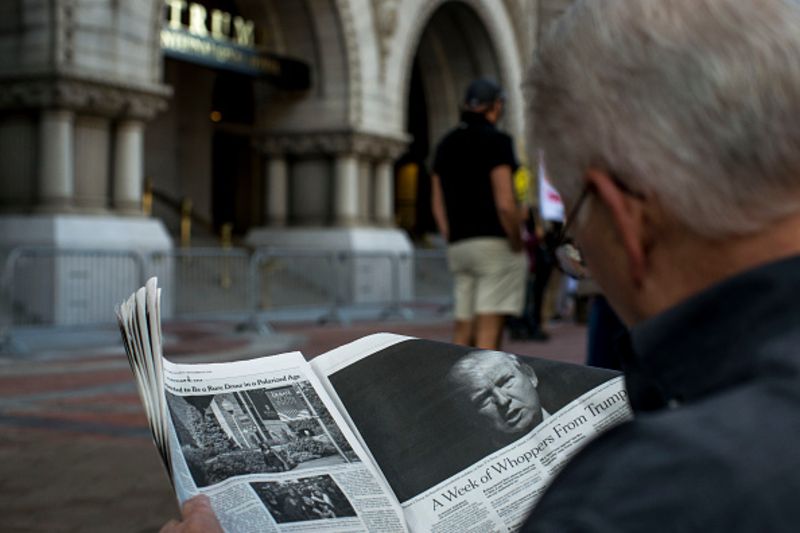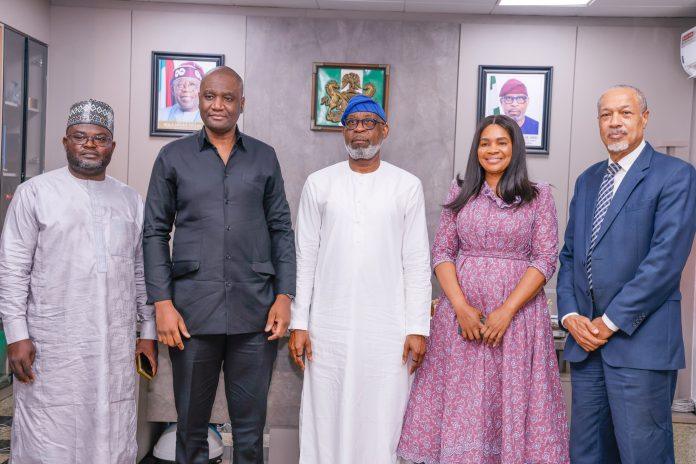One of the more delicious elements of the Trump-Russia scandal is that it’s being driven not by social media or television talking heads but by reporters, especially those from two old-line media outlets, the Washington Post and the New York Times.
The Post has broken news about President Donald Trump’s first national security adviser, Michael Flynn, and the lies he told about dealings with Russians that forced Trump to fire him. It was the first to report that Attorney General Jeff Sessions misled Congress about his meetings with a Russian diplomat, after which Sessions recused himself from involvement in the Trump-Russia investigation. It discovered that Trump revealed classified information to Russia’s foreign minister, and that Trump’s son-in-law, Jared Kushner, sought to establish a private communications channel with Moscow and failed to disclose those contacts.
The Times’s big scoop last week was about a meeting involving Kushner, the president’s son Donald Trump Jr., and a Russian lawyer, which the younger Trump attended in hopes of gathering dirt about Hillary Clinton. Earlier, the paper disclosed that the president tried to pressure the director of the Federal Bureau of Investigation, James Comey, to end an investigation of Flynn’s activities before he fired him. Its intelligence sources allowed it to reveal that Russian officials discussed ways to influence Trump through his aides. There have been important stories from other outlets, but these two print (and now digital) powerhouses have dominated.
“This has been a feast for investigative reporters and fantastic work by the New York Times and Washington Post,” said Jill Abramson, a former Times executive editor and previously an investigative reporter herself. “Thank God they are there.”
The reporting facilitates the Trump-Russia inquiry, headed since Comey’s departure by special counsel Robert Mueller. Ideological battles waged by partisans—Fox News versus MSNBC, or the New York Times editorial page versus the Wall Street Journal’s, or Drudge versus Daily Kos—are easily dismissed. By contrast, tough, accurate reporting advances stories.
It’s clear that there’s a gusher of sources, including insiders who’ve been briefed by participants, FBI officials, intelligence professionals and, as always, members of Congress and their staffers.
TrumpWorld calls leakers “the deep state,” its sinister-sounding description of an embedded Washington establishment trying to undercut an outsider to preserve its own power.
But many revelations come from the White House itself. In almost a half-century in Washington, I’ve never seen  a presidency that leaks like this one; you need a scorecard to track the contest between aides leaking dirt on one another.
a presidency that leaks like this one; you need a scorecard to track the contest between aides leaking dirt on one another.
To date there have been just a few reportorial misfires, as there always are during prolonged investigative projects. Even during Watergate, the Washington Post’s Bob Woodward and Carl Bernstein made mistakes on the way to exposing the corruption that led to President Richard Nixon’s resignation in 1974.
That’s why, apart from pandering to his base, Trump’s attacks on what he calls the “failing New York Times,” and his threats to retaliate against Amazon.com Inc., whose chief executive Jeff Bezos owns the Washington Post, fall flat. (Bezos, to the surprise of many old-time journalists has shown all the steadiness and determination that distinguished publisher Katharine Graham’s and editor Ben Bradlee’s stewardship of the Watergate-era Post.)
This White House is the gang that can’t shoot straight. For evidence, look no farther than the excerpt in New York Magazine this week from the compelling new book, “Devil’s Bargain: Steve Bannon, Donald Trump and the Storming of the Presidency,” by Bloomberg’s Josh Green. In the excerpt, Bannon says he’s going to set up an outside war room to go after enemies like the special counsel—“to throw some [expletive deleted] haymakers.”
In that contest, bet on Mueller, the tough and experienced prosecutor, and decorated ex-marine.
Amazingly, Bannon consulted with a Clinton lawyer and friend, Lanny Davis, on how to model this war room. Davis is a self-promoter who, during the scandals of the Bill Clinton presidency was mainly a peripheral figure and TV talking head.
Anyway, the analogy today isn’t to Clinton but to Nixon more than four decades ago. There probably aren’t White House tapes of Trump’s conversations with aides, as there were of Nixon’s in the 1970s, but there’s plenty of surveillance and a gusher of sources.
Also, there’s better journalistic competition; the Times got in late to Watergate with a few scoops, including Seymour Hersh’s reporting that hush money was paid to the burglars who, on Nixon’s behalf, broke into the Democratic National Committee headquarters in the Watergate Hotel. But the story was dominated by Woodward, Bernstein and the Post.
In that pre-Internet age, Washingtonians eagerly awaited each morning’s newspaper; sometimes you’d drive at night to the Post building to get a paper coming off the presses. Nobody has to do that anymore, but modern-day news hounds need to check multiple websites, hour-by-hour.
There’s one other instructive parallel: It not safe to draw conclusions based on one revelation or another. Like Watergate, this story will keep evolving.
Courtesy Bloomberg








